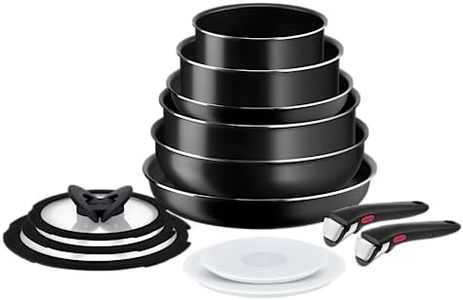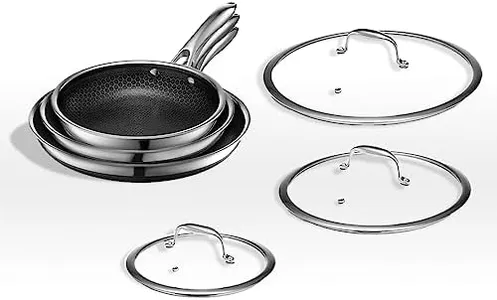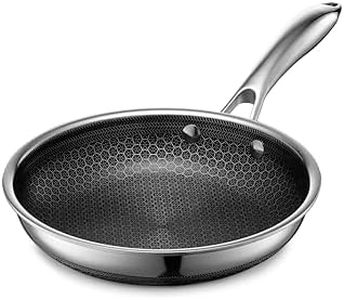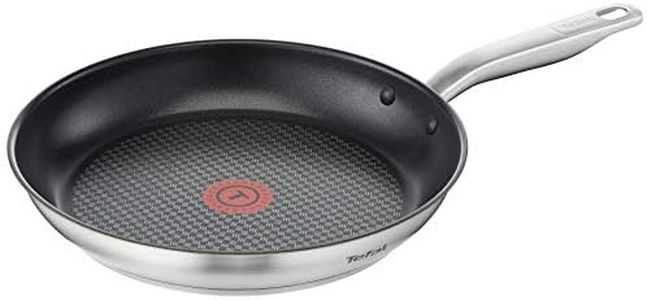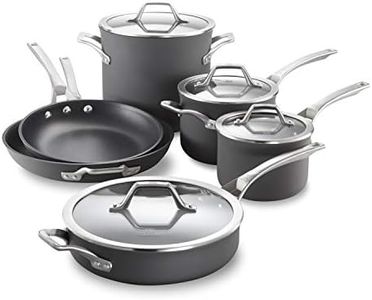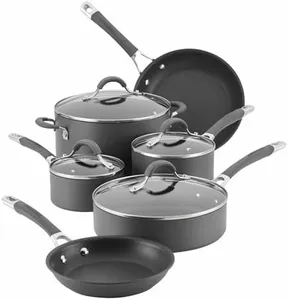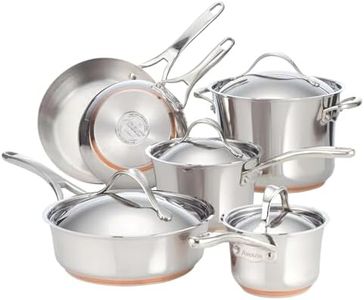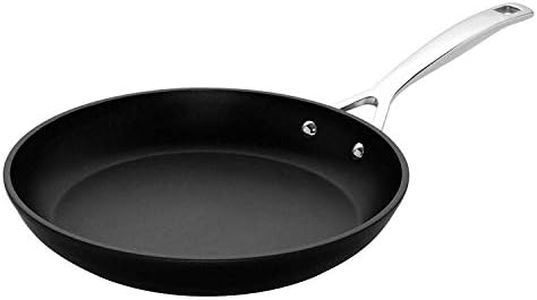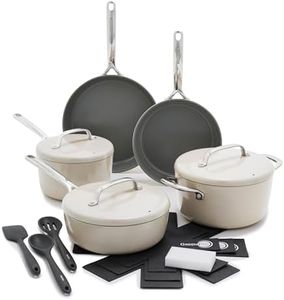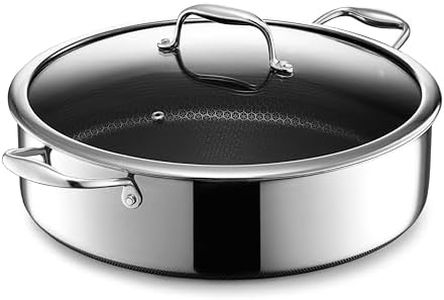We Use CookiesWe use cookies to enhance the security, performance,
functionality and for analytical and promotional activities. By continuing to browse this site you
are agreeing to our privacy policy
10 Best Scratch Resistant Cookware
From leading brands and best sellers available on the web.Buying Guide for the Best Scratch Resistant Cookware
When shopping for scratch-resistant cookware, it's important to focus on finding pots and pans that will last long, maintain their appearance, and keep their cooking surfaces safe and effective, even after frequent use. Scratch resistance helps protect both the performance and safety of your cookware, so understanding the key specifications can help you make a choice that suits your cooking style and habits.MaterialMaterial refers to what the cookware is made from. Common choices include stainless steel, hard-anodized aluminum, ceramic, and cast iron. This specification is important because some materials are naturally more scratch-resistant than others. For example, stainless steel and hard-anodized aluminum are generally tougher and resist scratches better than standard nonstick pans. If you tend to use metal utensils or often stack your cookware, choosing a material like hard-anodized aluminum or stainless steel can be a smart move. On the other hand, if you prefer lightweight options, ceramic coatings may be suitable, though they can be more prone to scratches and require careful handling.
Coating TypeCoating type indicates what kind of protective layer is applied to the cooking surface, such as nonstick, ceramic, or enamel. This matters because the right coating can make pots and pans easier to clean and less likely to get scratched. Nonstick coatings are convenient but may be more delicate unless reinforced, while ceramic and enamel offer a hard, glass-like finish that can resist moderate scratches. If you often cook sticky foods and want easy cleanup, look for reinforced nonstick coatings; if durability is your focus, ceramic or enamel-coated surfaces might be preferable, provided you avoid harsh metal utensils.
Utensil CompatibilityUtensil compatibility tells you what kind of tools you can safely use with your cookware—metal, silicone, wood, or plastic. This is important because some cookware, especially nonstick or ceramic, may get scratched by metal utensils. Manufacturers often state whether you can use metal spatulas and spoons on the surface. If you already have a set of utensils at home, check if your preferred cookware will work with them. If you don't want to worry about scratches from metal tools, consider cookware labeled safe for metal utensils.
Layer or Reinforced ConstructionSome cookware is built with extra layers or reinforcement, such as multi-ply bases or diamond-infused coatings, to improve scratch resistance. This specification affects both how tough the cookware is and how evenly it heats. If you plan to cook regularly, use the dishwasher, or cook for a family, picking multi-layered or reinforced cookware may give you added peace of mind about its durability. For occasional use or gentle handling, this may be less critical.
Care and Maintenance RequirementsThe care and maintenance requirements describe how you should clean and store the cookware to preserve its scratch resistance. Some types are dishwasher safe, while others need hand washing to avoid surface damage. This is important because improper cleaning or stacking can increase the chances of scratching, even if the cookware is labeled scratch-resistant. If you want minimal upkeep, look for cookware that's dishwasher friendly and durable; if you're able to take more care during cleaning and storage, you may have more flexibility in your choice.
